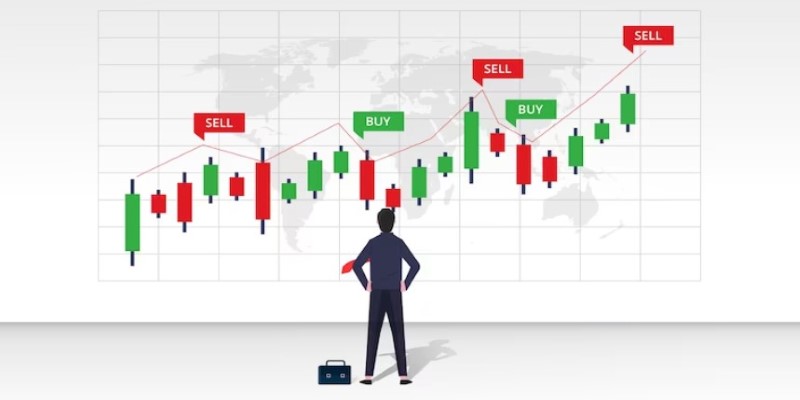In the world of stock trading, success often hinges on understanding and interpreting various technical indicators. These indicators help traders make informed decisions by providing insights into the market's behavior. One such indicator that has gained significant attention among traders is Relative Volume.

Unlike traditional volume metrics, Relative Volume offers a deeper perspective on how current trading volume compares to historical norms. Understanding this concept can be a game-changer for traders looking to identify potential market moves and optimize their trading strategies.
What Is Relative Volume?
Relative Volume, often abbreviated as RVOL, is a stock market indicator that compares the current trading volume of a stock to its average trading volume over a specified period. While regular volume simply tells you how many shares are being traded at a given moment, Relative Volume adds context by showing how todays volume stacks up against historical averages. This comparison provides traders with a clearer picture of whether a stock is experiencing unusually high or low activity, which can signal potential opportunities or risks.
For example, if a stock typically trades one million shares daily, but today its already at two million shares halfway through the trading day, the Relative Volume would be higher than 1, indicating heightened interest or activity. This spike in volume might suggest that something significant is happening, whether its news, rumors, or a shift in investor sentiment.
How Relative Volume is Calculated?
Calculating Relative Volume is straightforward, but it requires some understanding of the components involved. The basic formula is:
Relative Volume (RVOL) = Current Volume / Average Volume over a specific period
Heres how it works:
Current Volume: This is the number of shares traded in a particular stock within a given timeframe, often measured by the hour, day, or even minute.
Average Volume: This represents the average number of shares traded over a similar timeframe, typically calculated over a period like 10, 30, or 60 days.
To illustrate, lets assume youre analyzing a stock that has a current trading volume of 500,000 shares by midday. If the stocks average trading volume for the last 30 days is 250,000 shares by midday, the Relative Volume would be:
RVOL = 500,000 / 250,000 = 2
An RVOL of 2 suggests that the stock is trading at twice its normal volume, signaling a significant increase in activity. Traders often pay close attention to such deviations as they can indicate unusual interest or impending price movements.
The Role of Relative Volume in Different Trading Strategies
Relative Volume plays a crucial role in various trading strategies, offering traders insights into market sentiment and potential price movements. Heres how it can be applied in different trading contexts:
Day Trading

Day traders rely heavily on Relative Volume to make quick decisions. In day trading, the goal is to capitalize on short-term price movements within a single trading day. Relative Volume helps these traders identify stocks that are experiencing unusually high activity, which often leads to volatility. For instance, a stock with a high RVOL might be moving rapidly, offering opportunities for quick profits. However, it also carries higher risks due to the potential for sudden price swings.
Swing Trading
Swing traders, who hold stocks for several days or weeks, use Relative Volume to identify the beginning of a new trend. An increase in RVOL can signal that a stock is gaining momentum, making it a prime candidate for a swing trade. For example, if a stock has been relatively quiet but suddenly shows a spike in Relative Volume, it might indicate the start of a significant price move, either up or down.
Breakout Trading
Breakout traders look for stocks that are breaking through key resistance or support levels. Relative Volume is a critical indicator in this strategy because a surge in trading volume often accompanies breakouts. A stock that breaks through resistance with high relative volume is more likely to sustain upward movement, as the increased volume suggests strong buying interest.
Contrarian Trading
Contrarian traders often look for stocks that are overbought or oversold based on various indicators. Relative Volume can help identify when a stock might be reaching an extreme point. For example, if a stock is trading with an extremely high RVOL, it could suggest that the stock is becoming overbought, and a reversal might be imminent.
Advantages and Limitations of Using Relative Volume
While Relative Volume is a powerful tool in a traders arsenal, its important to understand its advantages and limitations to use it effectively.
Advantages of Using Relative Volume
Contextual Insights: Unlike regular volume, Relative Volume provides context by comparing current activity to historical averages. This helps traders understand whether the current volume is truly significant.
Early Detection of Trends: Relative Volume can help detect the early stages of new trends. A sudden spike in RVOL often precedes a price movement, allowing traders to enter positions before the trend fully develops.
Enhanced Decision-Making: By offering a clearer picture of market activity, Relative Volume enables traders to make more informed decisions, whether they are day trading, swing trading, or using another strategy.

Limitations of Using Relative Volume
False Signals: Like any technical indicator, Relative Volume is not foolproof. High Relative Volume does not always result in a significant price move. External factors, such as market-wide events, can create false signals.
Overreliance Risk: Traders who rely too heavily on Relative Volume may overlook other critical factors, such as fundamental analysis or broader market trends. This could lead to poor decision-making.
Short-Term Focus: Relative Volume is often more useful for short-term trading strategies. Long-term investors may find it less relevant, as they are more concerned with a companys fundamentals than with short-term trading volume spikes.
Conclusion
Relative Volume is a valuable indicator for traders seeking to gain an edge in the stock market. By comparing current trading volume to historical averages, it offers insights into whether a stock is experiencing unusual activity, which can signal potential trading opportunities.
Whether youre a day trader looking for quick moves, a swing trader searching for emerging trends, or a breakout trader seeking to capitalize on key price levels, Relative Volume can enhance your strategy. However, like any tool, its essential to understand both its strengths and limitations.







